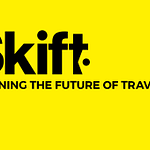Hi,
Welcome to Remotely Inclined, a newsletter about running a business remotely. If you’d like to sign up, you can do so here. Want to share your feedback? Respond to this email (or send me one) Or just read on…
Buffer makes over $20 million in revenue annually, but they don’t have a sales team. Instead, they have a lifecycle marketing team led by Ashley Hockney. She started working remotely at Zapier, then as an entrepreneur, and now at Buffer.
In this conversation, Ashley shared more about how Buffer grows without a sales team and the tools and processes she uses to lead a distributed, remote team of marketers across the globe.
A remote marketer’s toolbox
→ Buffer is timezone agnostic, so all documentation and collaboration has to be inclusive of people in different timezones. A big way Ashley does this with her team is through Slack threads. That way, everyone can see the core topic and add their thoughts into the thread. When organized properly, threads are easily searchable, so anyone in the company can learn about what’s going on.
→ A powerful “tool” in Ashley’s arsenal is not a tool at all, but being a moderator. Buffer has guides on how to communicate - what type of information goes where, for instance - and Ashley spends some time ensuring those guidelines are followed. Because the team is asynchronous and remote, clean data is critical for team collaboration and knowledge sharing.
How to be a remote marketing leader
→ Remote marketers have to show their emotion, thoughts, and personality through writing. If you’re not a strong writer - and even if you are - Ashley recommends leveraging emoticons, smileys, and other types of content to help express emotions if you don’t have the words to do it. This is often frowned upon in “professional” settings, but can be incredibly helpful at generating connection and understanding remotely.
→ Leadership is about providing your team access to data and information, but then giving them time and whitespace to learn by themselves. A good marketing leader might be smart, but cannot teach their team everything. As well, in order to encourage learning on their own, a team leader has to both demonstrate that for the team and make sure people have time and autonomy to learn.
The final word
“[Remote work] is truly something I think is here to say. Allowing life to be a priority over a commute. Letting people get two hours back in their day to say “this is my time.”
Remotely Inclined Chats with Ashley Hockney
Transcript edited for brevity and clarity.
Stefan: Welcome, Ashley! Tell me about yourself and your work at Buffer.
Ashley: I joined Buffer as the Director of Marketing and was running this team of product marketers, growth marketers, email, and community. We were looking at our customers and thinking how we could serve them. Traditionally, you might see a marketing director really invested in revenue, leading into growth hacks, etc.
But I’m now the Head of Lifecycle Marketing, which is a bit of a divergence from that. We look a little bit more at lifetime value (LTV) and how we support users, not just at the moment of coming into the funnel, onboarding, or confirming at the end of a trial. It’s what happens after that.
Buffer is famously remote. But you don’t have a sales team. How do you do business remotely without a sales team?
I’ll break it down into parts and explain why it made sense to focus on lifecycle marketing at Buffer.
With a sales team, you’re devoting a lot of time to one-on-one attention, but it’s also very outbound. There is a lot of value in that, particularly in B2B companies or enterprise-focused companies. But when we think about lifecycle marketing, the actions are a little more at scale or data-driven. It’s more about how we can achieve that customization through smart data at scale (Lots of big words, I know).
A lot of this aligns with Buffer - who we are and what we know that people love. When we think about our value proposition and positioning in the market, we think about why we are great at this - and it comes down to our brand, how we do things, and how we think about our customers.
It’s also things like our transparent salaries and our culture. That translates a bit into our product as well - with what we hope is a simple UI. With those things in mind, a business model of going really upscale and trying to one serve someone with a thousand-dollar budget just didn’t feel like us. So when we think about how we grow and scale the business without reaching for big contracts, it became about serving more people at a more accessible price point. It just felt really on-brand for us to say let’s serve a couple more and lean away from a model that searches for a really high price point.
How do you keep the creativity up when you’re remote and can’t brainstorm in one room?
Truthfully, it comes down to your people and investing in them. We hire people who are so thoughtful and considerate, and out of that comes empathy for wanting to do better and wanting to learn more.
Structurally, especially coming in as a marketing director, it was about how I empower my team with smart data and then time and white space to go research and learn so they can make decisions on their own. Communication is part of that as well.
How do you facilitate communication on a remote team?
Slack! Slack threads are key. We use it to asynchronously chart big thoughts and concerns. We also use Dropbox Paper and Dropbox Files. Then, it’s not a tool, but we have guidelines on how we communicate - what goes where, how, when.
When you’re thoughtful about that, you get that kind of inclusivity and cross communication that can get out of hand if you don’t set those guardrails.
What are the most important guidelines people need to set for remote communication?
I think it’s necessary to know what communication goes where. At Buffer, we’re timezone agnostic, which has to be a choice you make as a company. With that, we’re intentional about communicating asynchronously to be inclusive of all time zones.
Another thing I’ve learned is that you have to be intentional about how you want things to go - and if you are going to moderate or not moderate. At Buffer, we’ve seen the benefit from moderation, offering how we communicate in a positive way. Or this is how we use emojis.
How did you get introduced to remote work? What made you choose to stay remote as you became a team leader?
I got my first foray into remote work when I was working at Zapier in 2016. I spent the year travelling around, which was an incredible experience. I’ve stayed remote since, started my own company and was remote from home. Then with Buffer I’ve always been remote.
Remote work is truly something I think is here to say. Allowing life to be a priority over a commute. Letting people get two hours back in their day to say “this is my time.” For me, that’s opened up opportunities. I spent time in Japan. I spent time in South America and now I know a little Spanish.
And staying is huge for parents as well. Perhaps 2016 is a trigger for me as we’re heading into an election. But we think of those boundaries between Coasties and rural areas. I live in Brooklyn, but I was raised in a small town in Indiana. There’s this dialogue about how these worlds are so different and how we don’t communicate. And one of the wonderful things about remote work is you’re not tied to where you are - you can reinvest in those communities. You can choose where you want to live. Boundaries set up by geography just aren’t there.
What’s the biggest lesson you learned as an entrepreneur that helps with your role at Buffer?
For anyone in tech, there’s this comment that people can’t wait to start their own business. That they don’t want a boss. Or that they want freedom. I was totally this person. What I found working for myself is that you have many more bosses, more clients, more partners, more landlords… there’s always a moment where you’re collaborating and co-creating.
Like the Bob Dylan song: You’re always going to have to serve somebody.
What’s your least favourite part of remote work - and how are you handling it?
I’m an extrovert. I love people. So it’s being intentional about getting out with friends after work or joining a coworking space that is easy to walk to.
What’s one thing you wish every remote marketer knew?
There’s this dialogue often in an aggressive growth space that’s about having to do something and push through and force it to come off as confident. That you can’t include emojis. Or no one likes smileys. You have to let people know where you’re at - lean into emoticons to help express emotion when you don’t have the words.
What resources do you turn to for professional development and learning?
I think remote is actually better for professional development. When things are remote and you’re doing it right, there’s a lot of documentation. For example, at Zapier I was trying to figure out if this launch we did had any impact on engagement and adoption. I went really deep in the data with before and after analysis. I could just pop in and spend a little extra time because I was curious reading and learning from other teams.
For anyone who’s curious or ambitious, those resources are there so you can asynchronously learn and absorb. There’s a lot of passive resources for you learn from your coworkers.
Amazing, thank you for your insights!
You can get in touch with Ashley via email or on Twitter.















Share this post